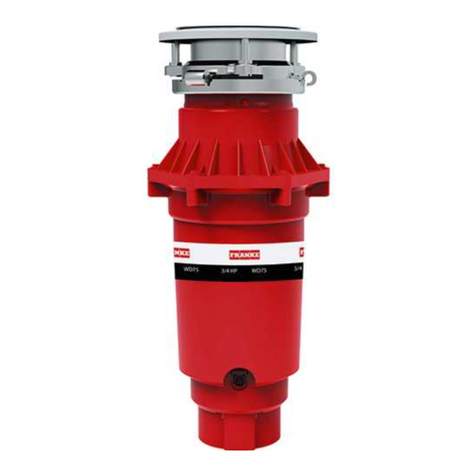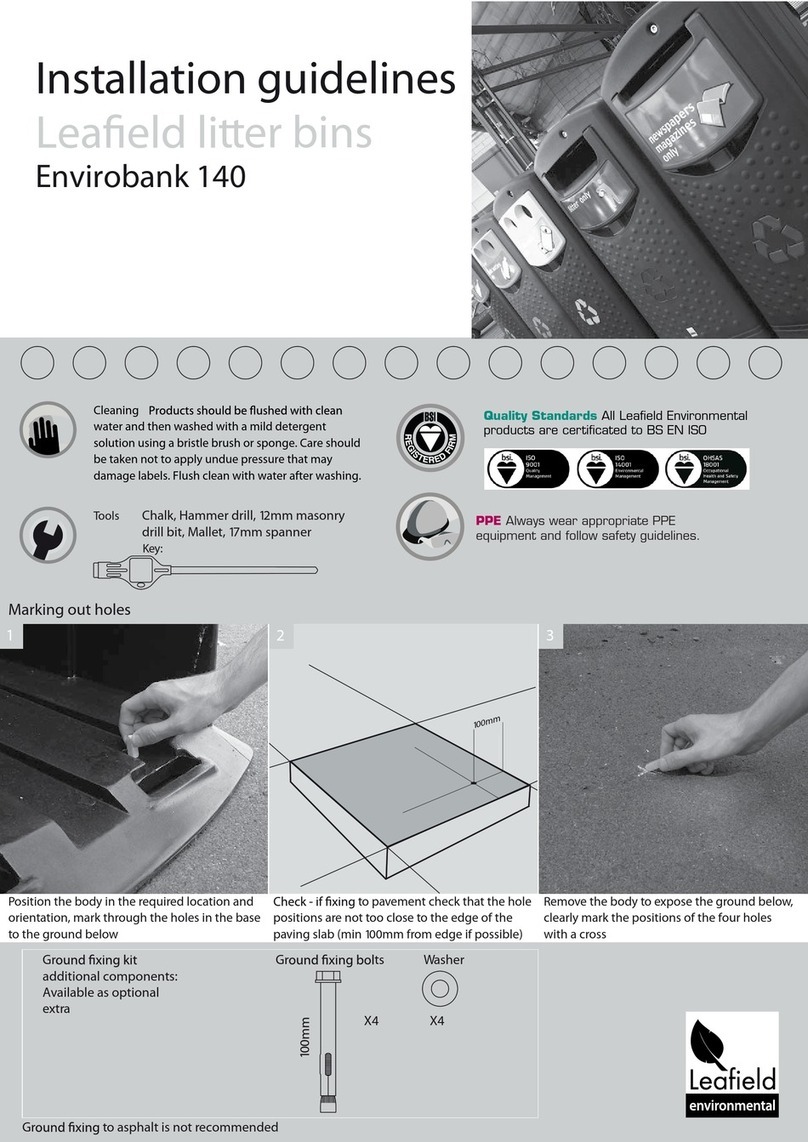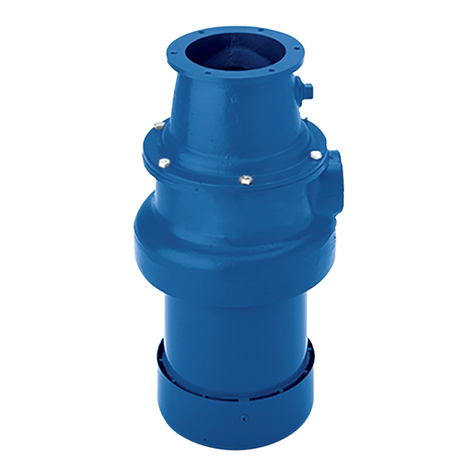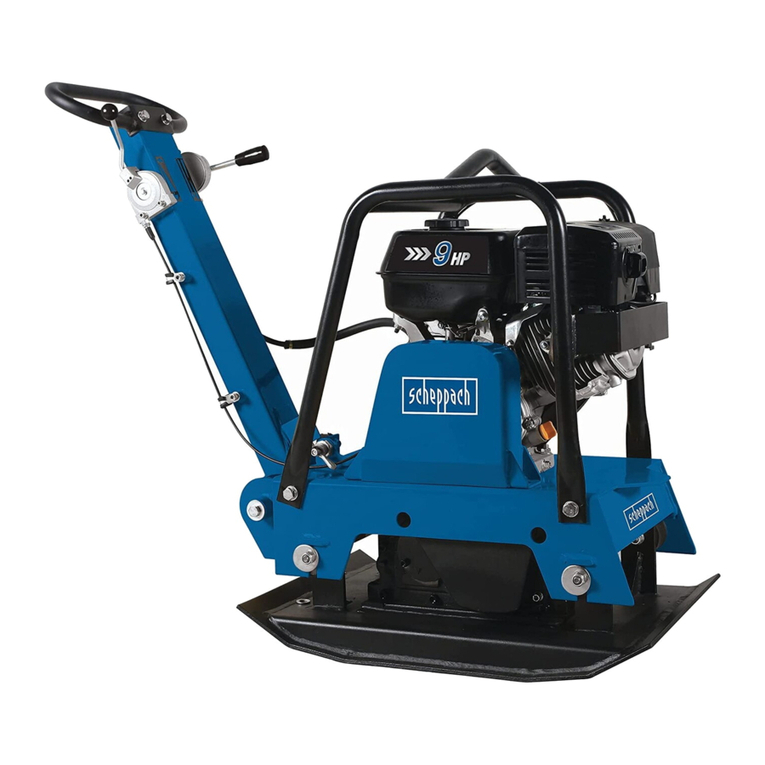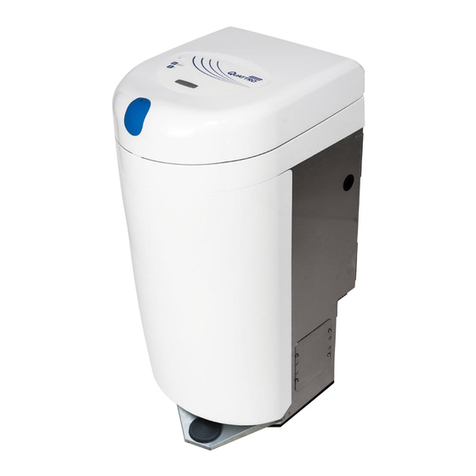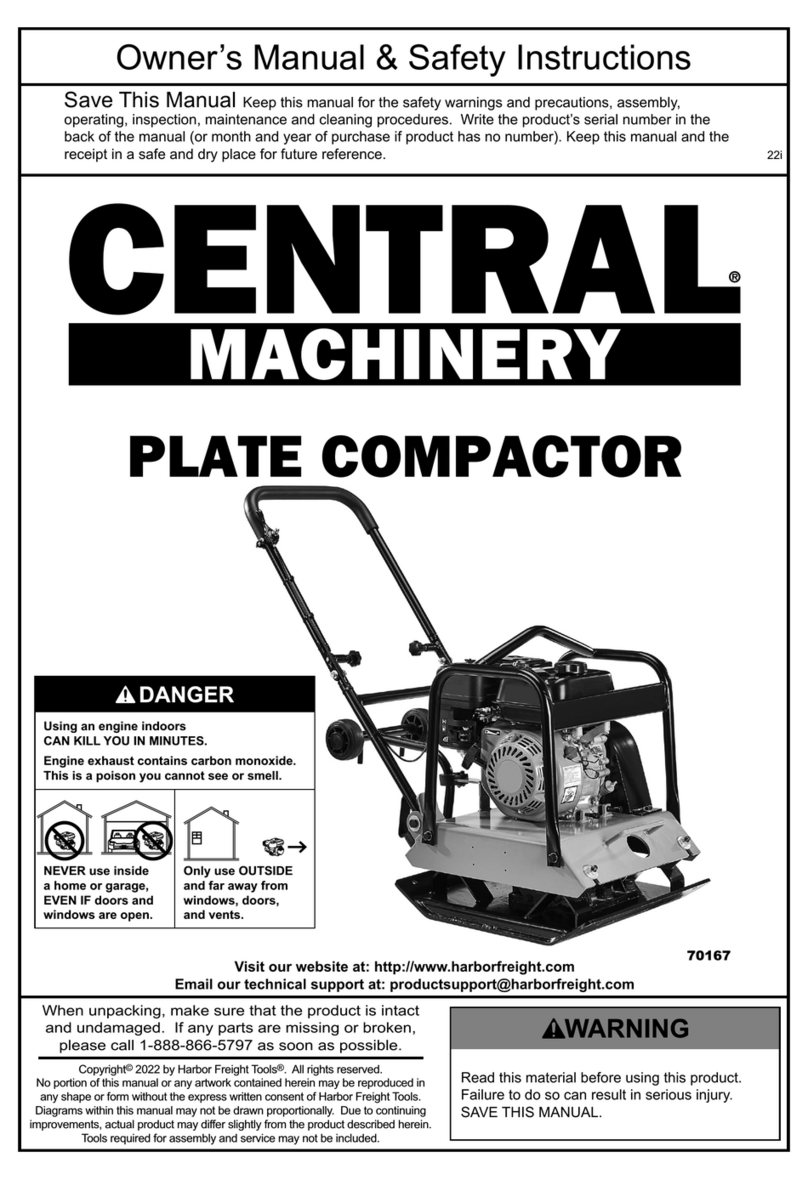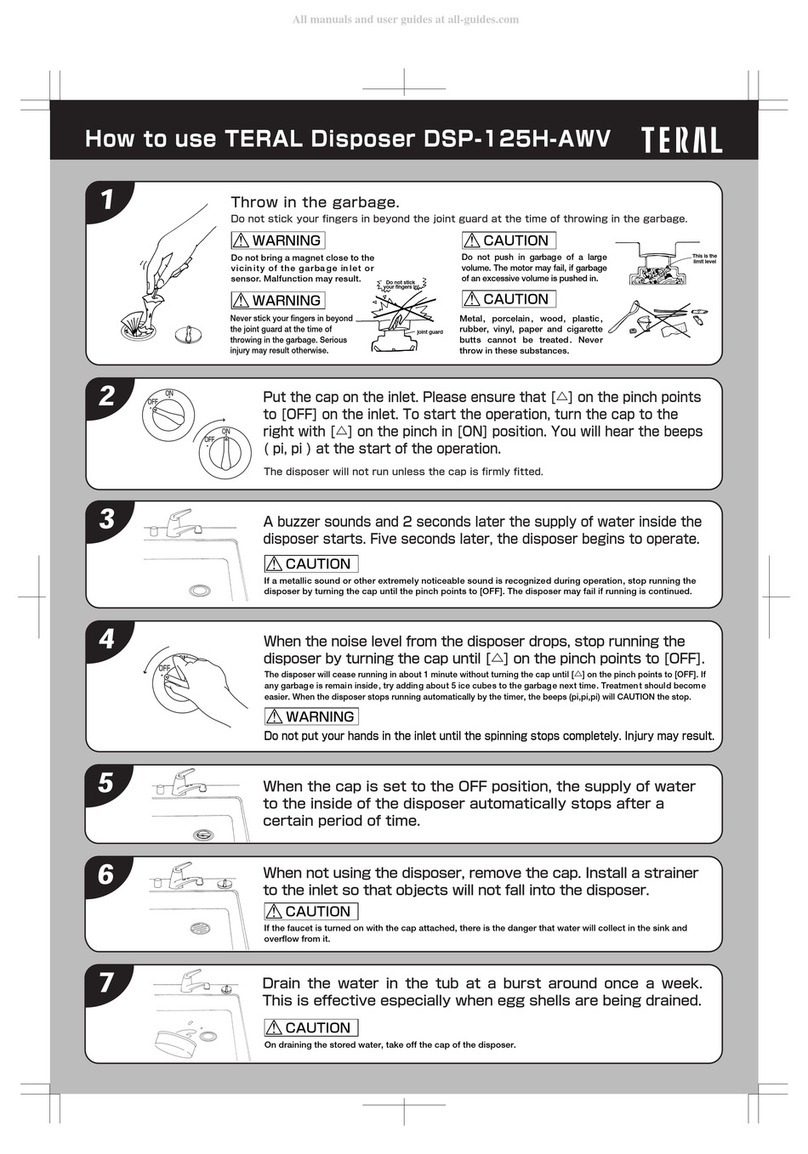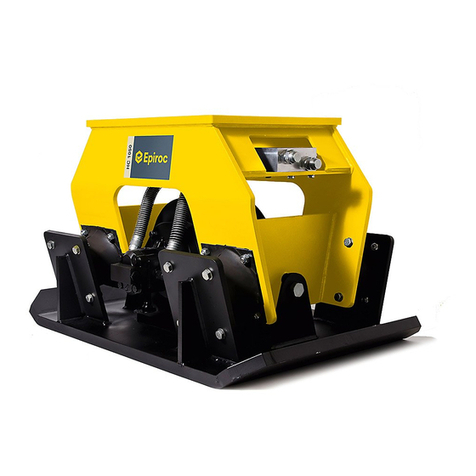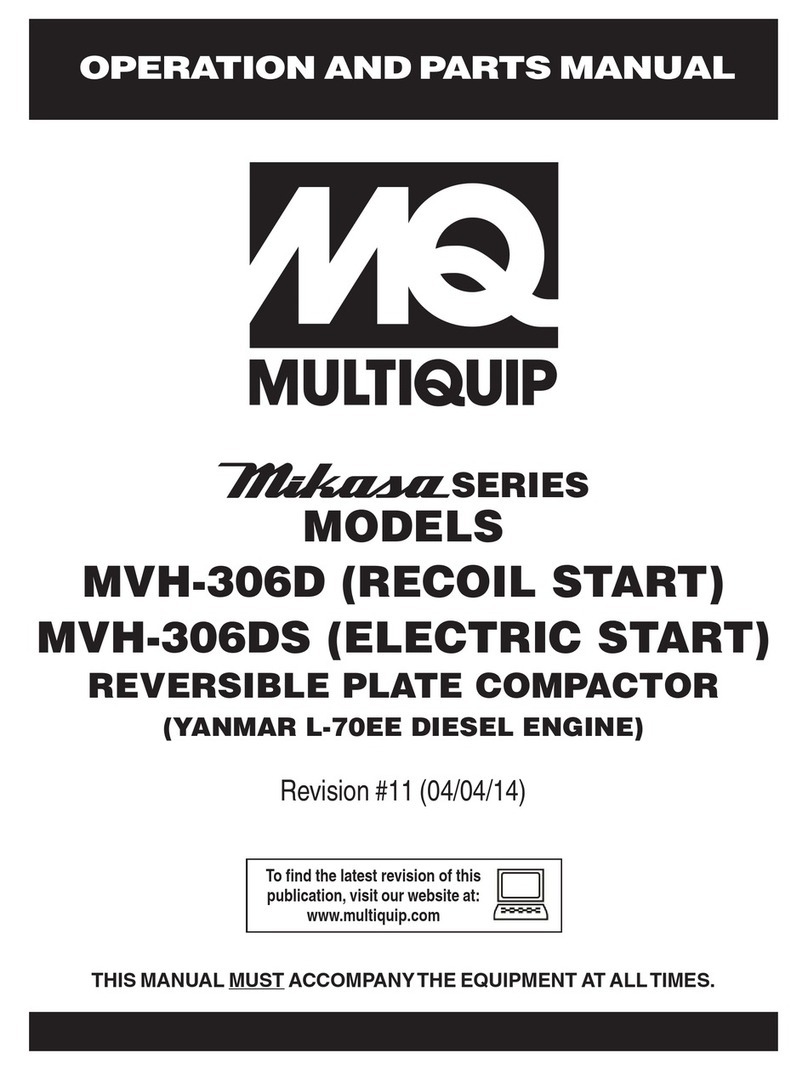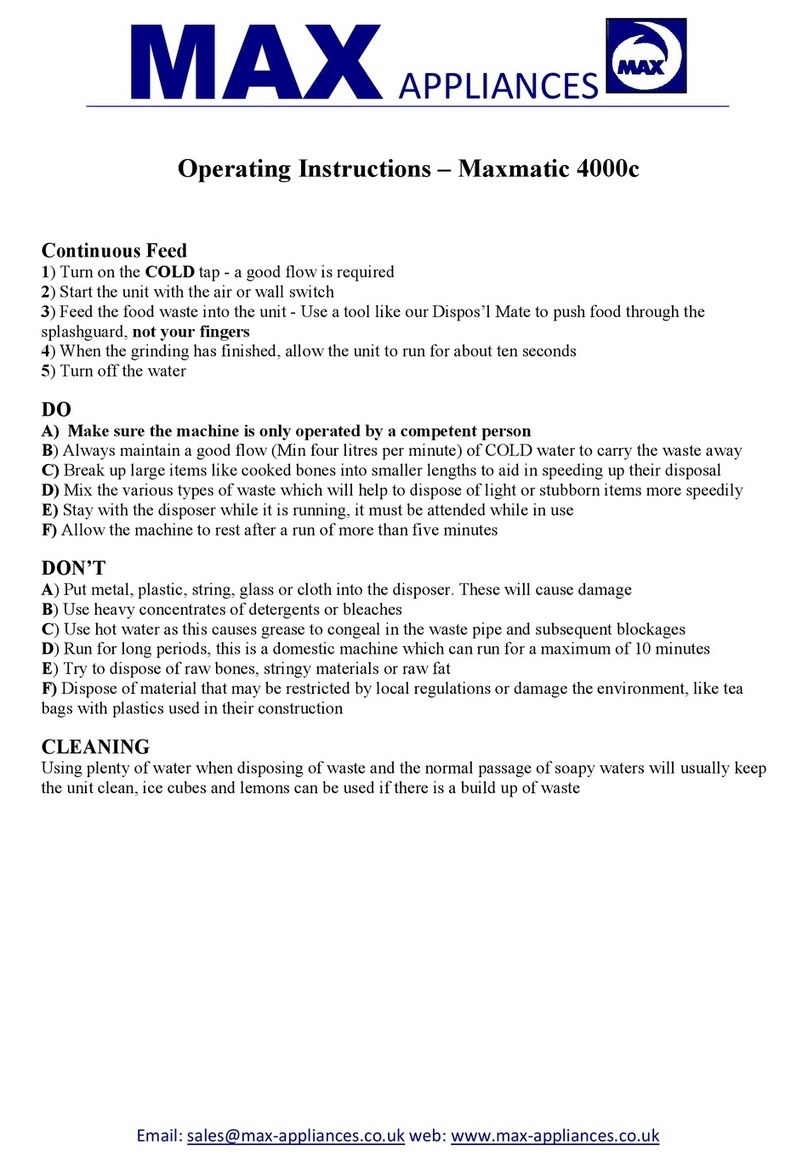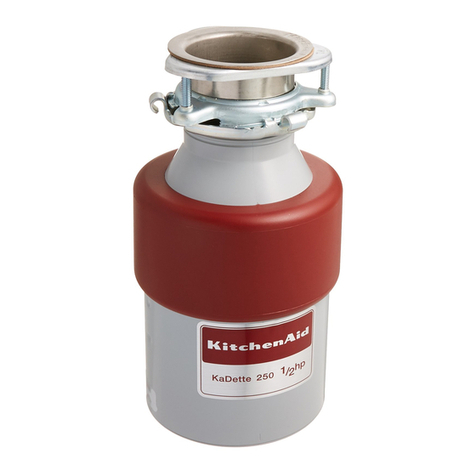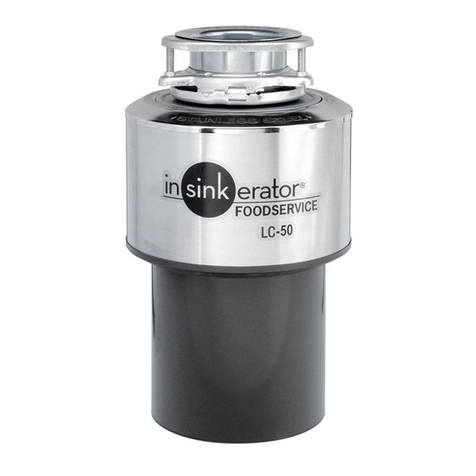The power cord and/or connections must comply
with the National Electrical Code.
For Models Not Equipped with a Cord:
If your disposer does not come equipped with a
cord, you can connect it in two ways:
1. Attach a power cord, minimum 18″in length
and not to exceed 36″in length.
or
2. Wire the disposer directly into the house
current.
To Attach a Power Cord:
GROUNDING INSTRUCTIONS: This appliance must
be grounded. In the event of malfunction or
breakdown, grounding provides a path of least
resistance for electric current to reduce the risk of
electric shock. The power cord (to be installed)
must have an equipment-grounding conductor and
a grounding plug. The plug must be plugged into
an appropriate outlet that is properly installed and
grounded in accordance with all local codes and
ordinances.
DANGER: Improper connection of the
equipment-grounding conductor can result in a risk of
electric shock. Check with a qualified electrician or
serviceman if you are in doubt as to whether the appliance
is properly grounded.
NOTE: Disconnect electric power to disposer circuit before
installation. Turn the circuit breaker to the OFF position or
remove the fuse.
A. Connect the disposer to 110–120 Volt, 60 Hz
AC current only.
B. If a plug-in cord is used, use a three-prong plug.
Ground wire
should be
attached to
the ground
screw in the
bottom of
the disposer
(end bell).
C.
Use a cable clamp
strain relief
connector where
power cord enters
the disposer.
To Wire Your Disposer Directly into the House
Current:
GROUNDING INSTRUCTIONS:
This appliance must
be connected to a grounded, metal, permanent
wiring system; or an equipment-grounding
conductor must be run with the circuit conductors
and connected to the equipment-grounding
terminal or lead on the appliance.
A. If you use BX cable:
1. Install the cable connector in the hole.
2. Connect white wire to white lead of disposer.
3. Connect black wire.
4. Connect bare ground wire.
If BX cable is not used, provide a separate ground
wire to nearest reliable ground, using the screw in
the end bell for the ground wire.
B. If your power supply does not include a ground
wire, you must provide one unless metal cable is
used. Attach a copper wire securely to disposer
ground screw and attach other end of wire to a
reliable ground. Use only CSA approved
ground clamp. If plastic pipe is used in your
home, a qualified electrician should install a
proper ground.
Trace lead connected to this
blade and attach that lead
to white wire on disposer. Ribbed Side
NOTE: When viewing face of electrical plug
with grounding pin at top, the larger left blade
is connected to the identified wire.
READ AND FOLLOW THIS SAFETY INFORMATION CAREFULLY.
SAVE THESE INSTRUCTIONS 3
Consumer SupportTroubleshooting TipsInstallation InstructionsSafety Instructions Operating Instructions
IMPORTANT SAFETY INSTRUCTIONS.
READ ALL INSTRUCTIONS BEFORE USING. www.GEAppliancesCanada.com
Strain Relief
Nut
Red Reset Button
Ground Screw
Wire Nuts
Remove
Cover Plate
To House Current
or Power Cord
WARNING!
HOW TO CONNECT ELECTRICITY (cont.)
If you are not familiar with electrical power and procedures, call a qualified electrician.
Bottom of the Disposer (end bell)
